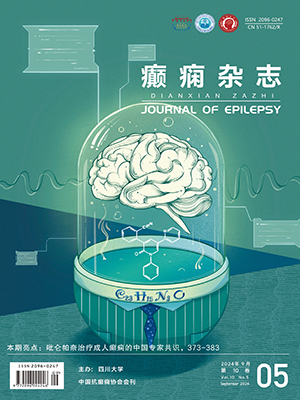| 1. |
Sato K, Arai N, Hida A, et al. Old stroke as an independent risk etiology for Todd's Paralysis. Journal of Stroke and Cerebrovascular Diseases, 2017, 26(8): 1787-1792.
|
| 2. |
Dague KO, Dafotakis M, Schulz JB, et al. Gaze palsy as a manifestation of Todd's phenomenon: case report and review of the literature. Brain Sciences, 2020, 10(5): 298.
|
| 3. |
Binder DK. A history of Todd and his paralysis. Neurosurgery, 2004, 54(2): 480-487.
|
| 4. |
Xu SY, Li ZX, Wu XW, et al. Frequency and pathophysiology of post-seizure Todd's paralysis. Medical Science Monitor, 2020, 26: e920751.
|
| 5. |
Van PW. Ictal SPECT. Epilepsia, 2004, 45(Suppl 4): 35-40.
|
| 6. |
Gaxiola-Valdez I, Singh S, Perera T, et al. Seizure onset zone localization using postictal hypoperfusion detected by arterial spin labelling MRI. Brain, 2017, 140(11): 2895-2911.
|
| 7. |
Farrell JS, Gaxiola-Valdez I, Wolff MD, et al. Postictal behavioural impairments are due to a severe prolonged hypoperfusion/hypoxia event that is COX-2 dependent. Elife, 2016, 5: e19352.
|
| 8. |
Van Cauwenberge MGA, Dekeyzer S, Nikoubashman O, et al. Can perfusion CT unmask postictal stroke mimics? A case-control study of 133 patients. Neurology, 2018, 91(20): e1918-e1927.
|
| 9. |
Rupprecht S, Schwab M, Fitzek C, et al. Hemispheric hypoperfusion in postictal paresis mimics early brain ischemia. Epilepsy Research, 2010, 89(2-3): 355-359.
|




